There was no reason to believe that she understood her hatchlings could be the last generation, yet when she came ashore to lay eggs, I watched her weep in invisible light.
Years ago, I realized that one thing I wanted to do with my limited time on this planet was to see endangered animals before they vanished. That simple desire led to me learning to use my first real camera, to me getting to know people in the conservation community, to my first forays into both advanced photography and the Central American forests and, eventually, to this story.
It was well after midnight when I came to my senses in the hot damp black of the carey project’s communal tent. The hawksbill turtle, or “carey” in Nicaragua, is dying out and a small team of scientists and locals are stationed on the beach to help save them. Locals patrol at night, looking for the telltale tracks that suggest a turtle has dragged herself from the sea to begin her long, slow, plodding crawl to the mangroves where she will lay her eggs. Once such a track is discovered, someone calls the tent and everyone wakes up and falls out the door into the barely-lit night.
Early last year, when I first spoke to Cūra Earth about their hawksbill research, I found it fascinating. We know the ocean is changing. Fishers report smaller hauls. Meteorologists report greater temperatures. Biologists report higher acidity. However, the ocean is so big and complex that it’s hard to get the type of sampling that’s needed to measure ecosystem health.
The breakthrough realization was that we already have sample points in all the Earth’s oceans. Since sponges filter the ocean’s water, they capture a representative sample of the bacteria, fungi, and viruses in that area. Since hawksbill turtles eat sponges, the microbiomes that form in and around them are made of these bacteria, fungi, and viruses – effectively turning each turtle into a mobile ocean sampling kit representing a small section of the seas.
If you want to know how the ocean is changing, all you need is a cotton swab and bit of testing.
Freshly awoken, I grabbed my gear and stumbled after the small crowd of people to the boat. Since my Spanish is fairly poor and their English was worse, we did the best we could with gestures, with no one wanting to break the stillness of the night. Finding the boat was somewhat difficult because it was the night of a new moon, overcast, and we were far enough from electricity that there wasn’t even a glow across the horizon. Still, we managed to get in and start the engine, the boat stirring up a faint sparkling ribbon as the bioluminescent algae expressed their irritation at our intrusion in the form of a pulsing green and blue wake.
As is often the case with excitement, I didn’t really think things through before I decided to go to Nicaragua and photograph the turtles. Trying to take pictures under a mangrove canopy at midnight during Nicaragua’s darkest nights could present some challenges. As I researched the environment, it became clear that my normal approach would not work. I had to figure out how to not only work in pitch darkness, but to do so without bothering the turtles themselves.
Any light at all can disrupt the laying process. Scientists can use red-gelled flashlights, but that approach would be too dim for the kind of photography I wanted to do.
I had some research to do.
We got to the beach and were guided by dim red light to where the turtle lay, laying. Immediately, the science team got started, measuring the turtle, performing checks and tests, and implanting a tracking tag. At the same time, they gathered eggs to take to the hatchery where the young turtles could incubate, protected against predators, gaining a better chance for their ultimate survival. I pulled out my camera and snapped on the screen viewer, blocking all visible light from the back of the camera. Then I turned on my special flashlight and got into position.
My research had led me past the normal solutions to night-time photography. A red-gelled flash would be too bright. A low light camera wouldn’t work in the near total darkness. Any type of light painting would be too slow. Worse, the poor light availability at the scene also prevented me from even very basic composition and focusing.
Fortunately, I had recently been experimenting with infrared photography, allowing me to take pictures of things that are invisible to our eyes. After a bit of searching, I discovered that infrared flashlights were readily available. Originally designed for hunters using night-vision goggles, they show up brilliantly on infrared-modified cameras. They form a tight beam allowing hunters to spot their prey at a distance. When used photographically, as you sweep it over a subject, it allows you to compose and focus. However, you cannot light the entire scene with a tiny circle of light.
When you convert a camera to infrared (I used LifePixel), all the sites warn you that focus will be a challenge. The super-fast optical focusing system will fail because each lens will focus infrared light somewhat differently, requiring many different calibrations, by lens and length. Counter-intuitively, the slower contrast-based focus systems used by live view are much more reliable and, when paired with the brilliant intensity of an torch, make auto-focus lock on with ease.
Unlike normal flashlights, the infrared torch works like a hand-held spotlight, swinging a circle of clarity across the inky black. I noticed things that would otherwise have been lost in the whole – the texture of the head, a barnacle on a shell, the scars on the flippers. The spot swings across the entirety of the scene, compressing the entire world into a sparsely filled three inch screen, giving nothing but glimpses and hints. I saw just enough to compose the shot by sense, feeling like a painter working from a charcoal sketch of a dimly remembered evening. When things felt right, I locked focus, positioned the flash unit, held my breath with hope, and pushed the shutter.
Once the focus problem was solved, I still had to light the scene. Luckily, I had begun working with wireless off-camera flash years back and had become quite proficient. However, gelling for infrared turned into quite the challenge, with many failed experiments along the way. The common problem was that, as photographers, we usually care more about getting the light where we want it in the shot … we don’t often think about blocking spill. Most gel systems create a significant amount of white light bleed, outside of the scene but still visible to the subjects. If that sort of light were seen by a laying turtle, though, it would all be over. No more eggs, no more science, and my effort to document the preservation of this strange and ancient species would instead hasten their doom.
Eventually, I found a solution. MagMod is a relatively recent company on the flash modifier scene. Their idea is to connect different modules with magnets and effectively stack them onto the flash head. An interesting side effect of this approach is that unlike other systems where a flimsy gel floats in front of the flash, the MagMod gels are made of firm plastic enclosed in black silicone rubber. With a bit of adjustment, the flash can be entirely enclosed in black, all light going through the gel and gel alone.
After that, it was just a matter of finding a plastics manufacturer who made an acrylic that was transparent to infrared but that blocked visible light. I found success with eplastics.com. After reviewing the spec sheet, I ordered some relatively thin sheets and, after botching a few tests on the scroll saw (like you do), I got one that worked reasonably well. Testing showed an extremely faint purple light by my eye, but the camera saw everything like I was lighting with a miniature sun. The question was, would the dim flash of purple be noticed by the turtle?
I heard the shutter click and I felt the flash in my hand pop. My eyes saw nothing at all. Judging from the reaction of the turtle, neither did she. I checked the screen and saw that it had worked. The turtle was evenly lit in beautiful infrared even though the flash was only on one quarter power. I had hoped that would be the case, as it allowed me to shoot faster. A turtle only has so many eggs in her and, once she’d laid them all, she starts covering them and flails about, covering all tracks that betray the presence of an easy meal. Then she heads back out to sea. The faster the flash could cycle, the more photos I could take in the extremely limited time I had to work with her.
It took me over forty eight hours to get all the way to the remote hawksbill laying site. Once there, it took another twenty four to see my first turtle. It took me half an hour to get from the tent to where she was laying and, once there, I had ten whole minutes to shoot. It felt like hours.
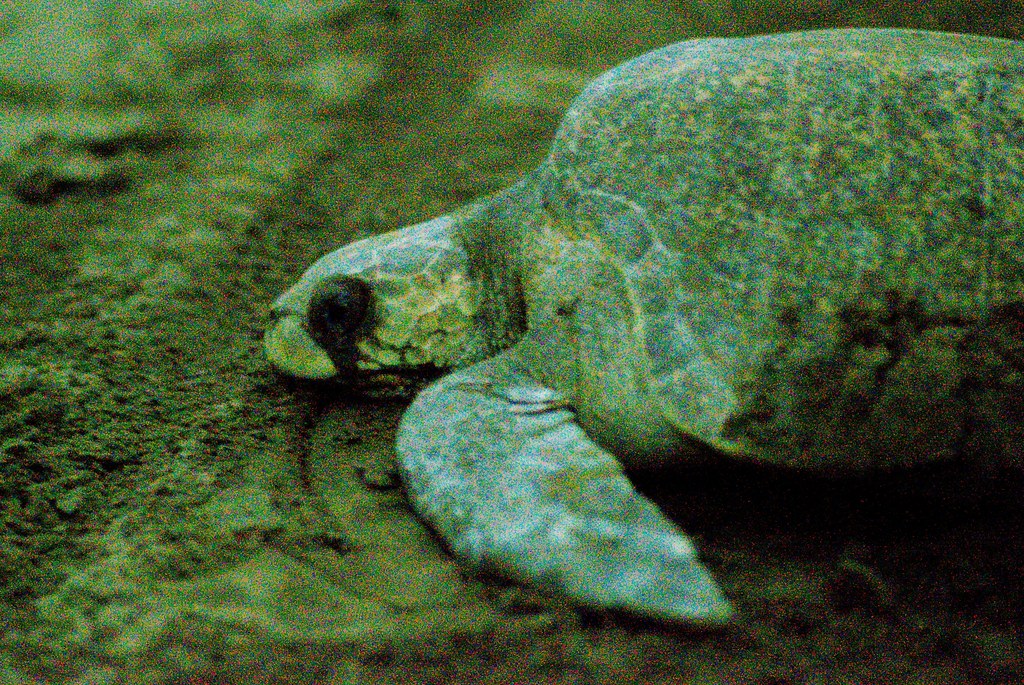


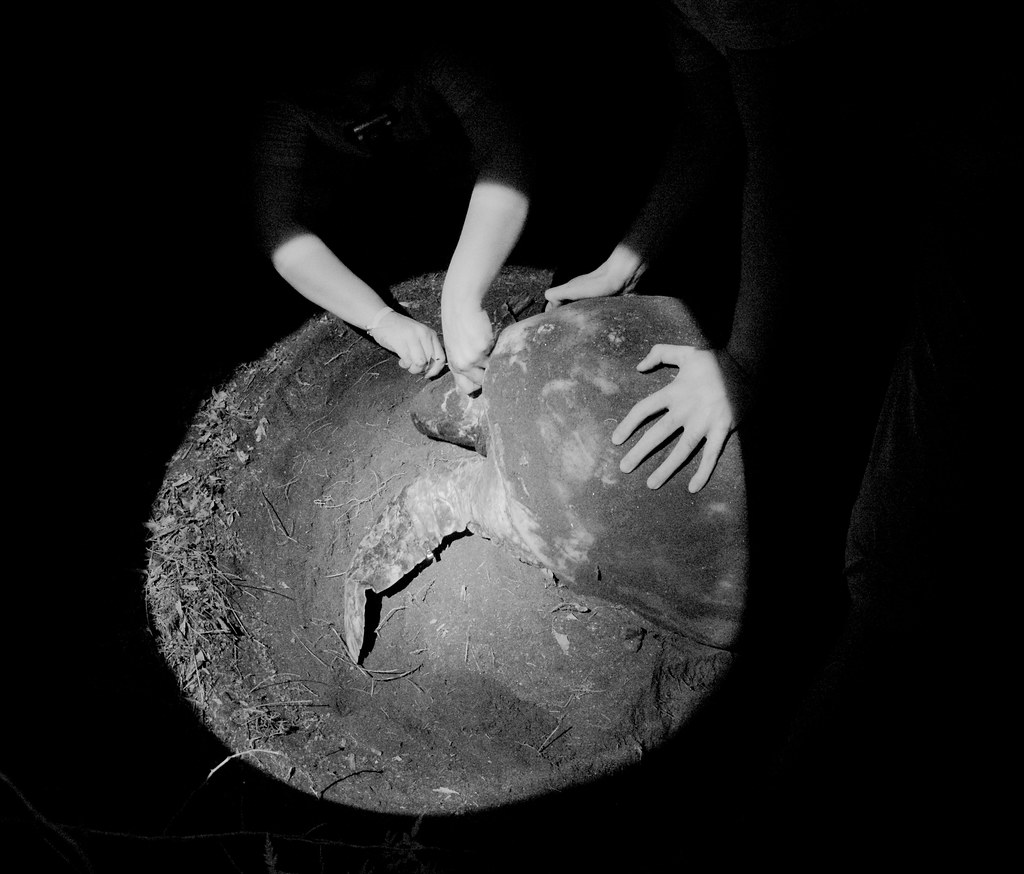
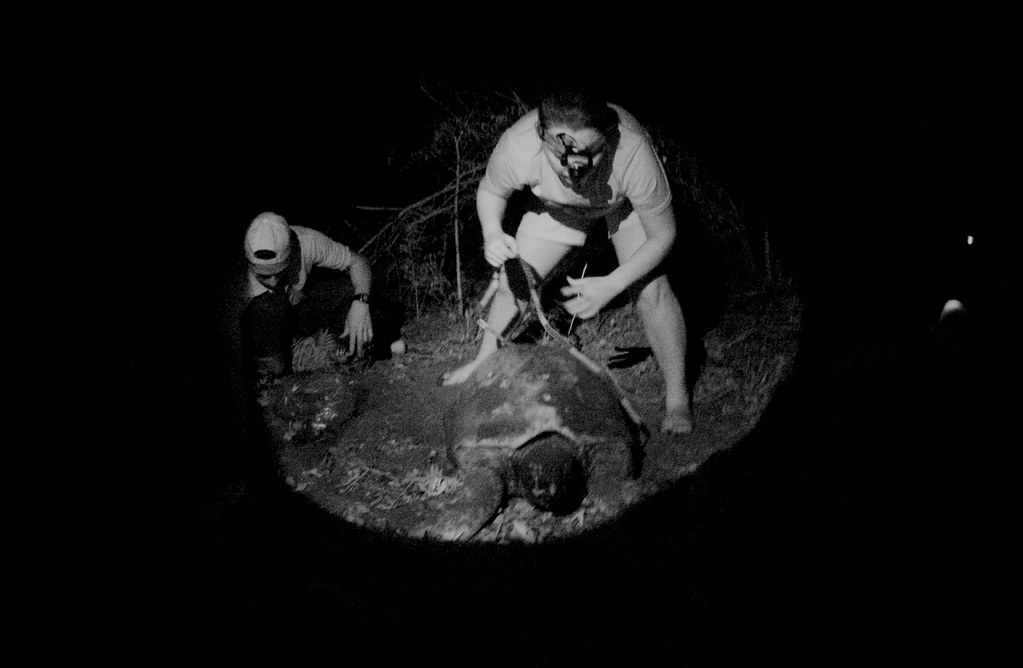
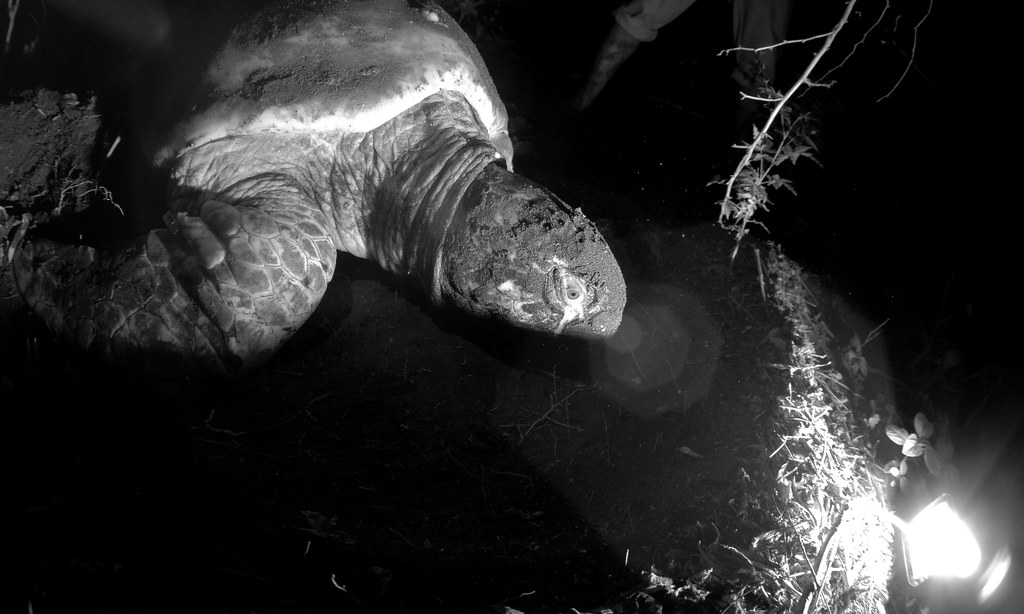


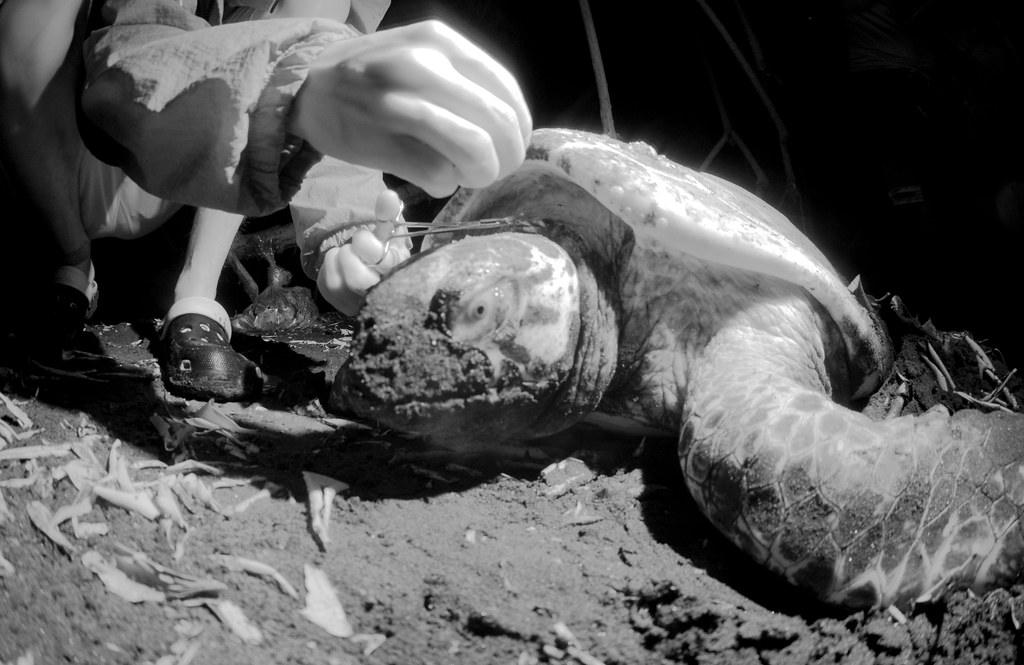
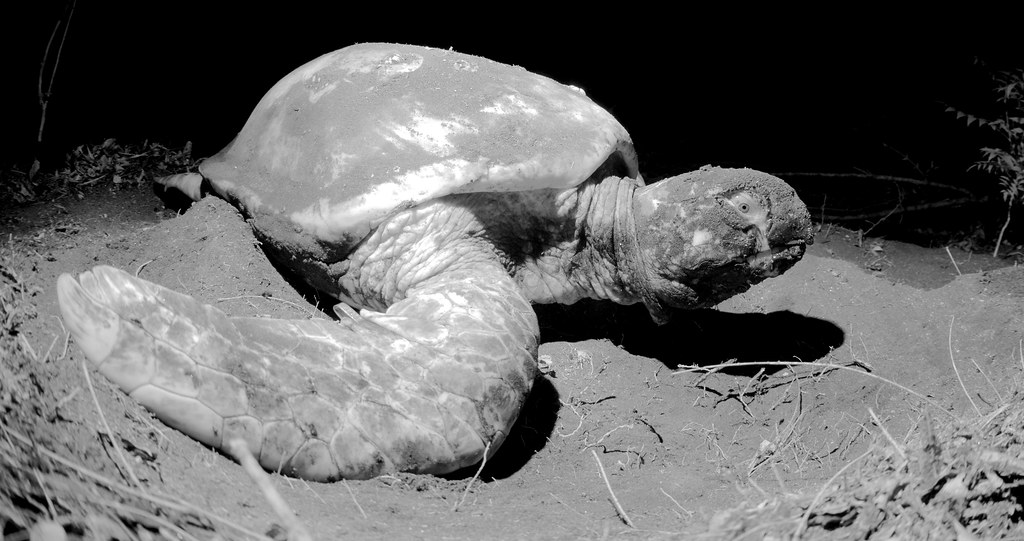


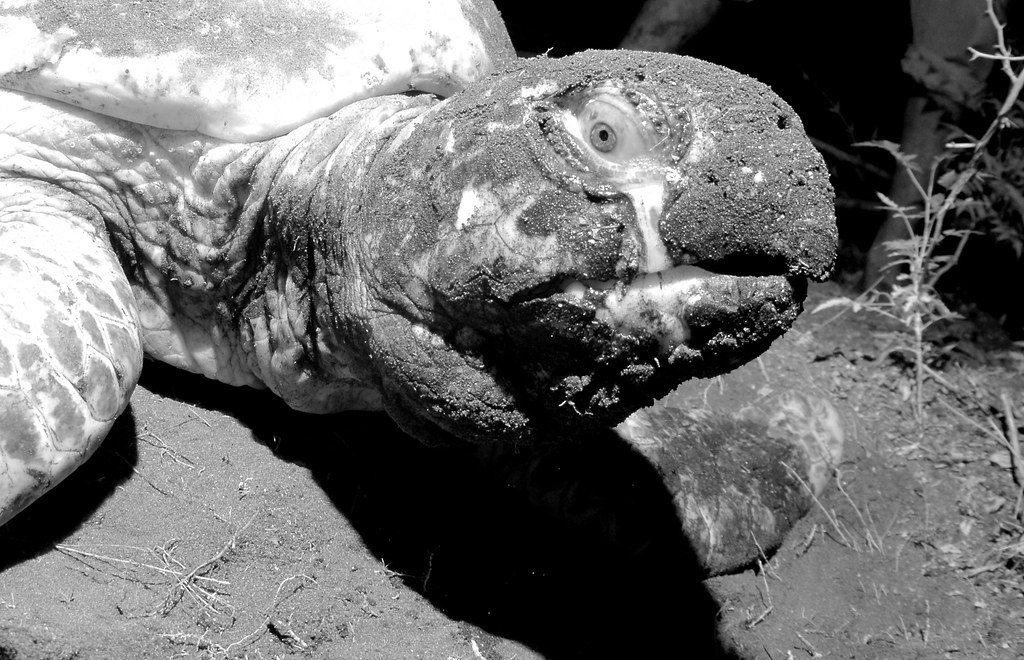

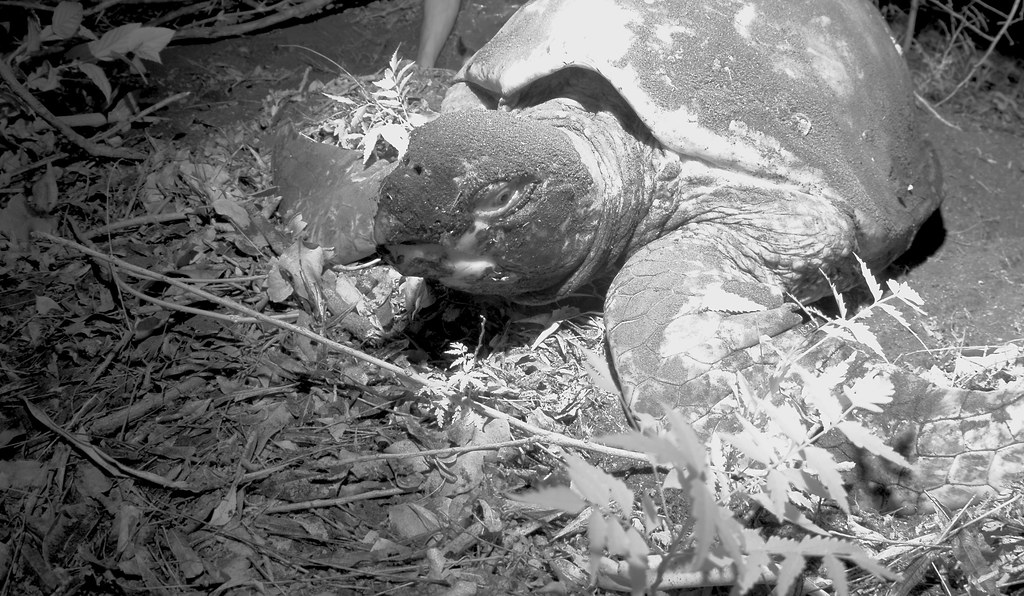
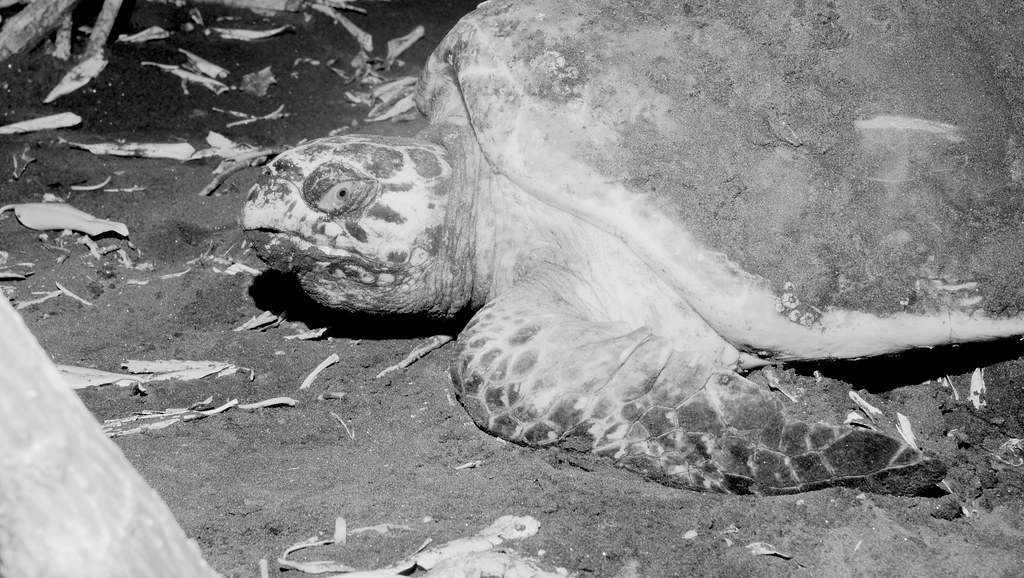
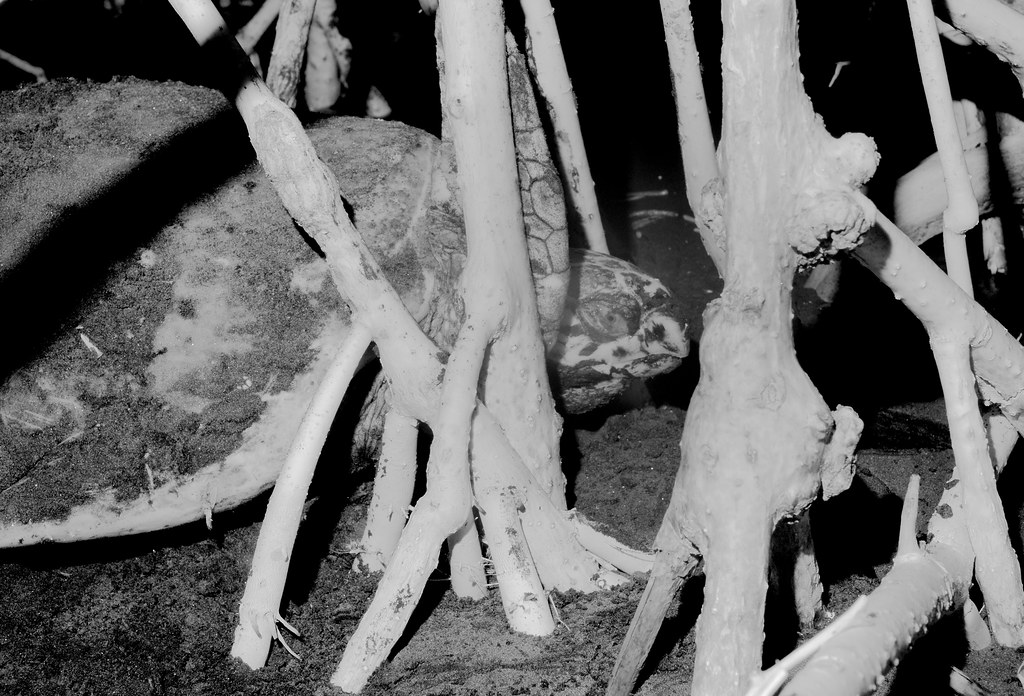

I was in Nicaragua for over a week. In that time, I saw only two hawksbill turtles. The hatchery reported lower numbers than expected and, when I left at the end of the hatching season, the hatchery itself was only half full. Though people are making tremendous efforts, the turtles are not doing well.
It is far easier to damage the ocean than it is to fix it.
Just a few years ago, the technology I used to take these shots did not exist. Just a few years from now, the turtles may not exist either.
I am grateful to have had this brief window in time, to see them, to capture their image, and to share them with you.
I am also thankful for the assistance from the following organizations that made this possible:
- Cūra Earth – For running the project that brought me to Nicaragua in the first place. If the project interests you, please donate to them [here].
- Fauna & Flora International – For running the local hatchery project, the boats, and monitoring for turtle nests.
Equipment List